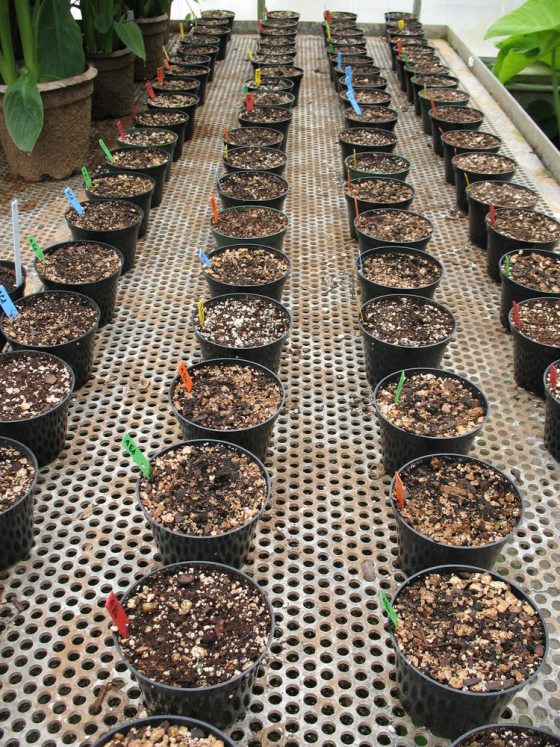
Compost is a “go-to” resource for gardeners. It’s packed full of plant essential nutrients, improves the soil quality, is produced locally at low cost, and is made from recycled materials. The challenge with using compost, however, is knowing when it becomes too much of a good thing. More is not always better!
At Longwood, we are committed to reducing our carbon footprint and minimizing waste. Each year, at our soils and composting facility, we transform 4,000 to 5,000 cubic yards of waste material into usable mulch and compost. These products are used in planting beds across the entire garden. Compost is also utilized as a turf amendment, applied to agricultural fields, and used as a component of our greenhouse growing media. Although we use compost in growing media for many reasons, one important reason is to reduce our reliance on peat moss—a medium component that is considered non-renewable.
Our researchers have worked to develop growing media blends that provide optimal conditions for our plants’ roots while being environmentally friendly. Utilizing Longwood compost in place of peat moss can be challenging, as the nutritional properties of these two components are vastly different.
We have discovered that successful growing media can contain up to 30 percent compost depending on the plants being grown. For this media to be successful, however, requires an understanding of pH levels and their impact on plants. Furthermore, because of the nutritional content of compost, fertilization can be reduced during the first weeks of plant growth.
Our researchers will continually work to determine the optimum growing media for our extraordinary plants, while staying committed to environmental stewardship.